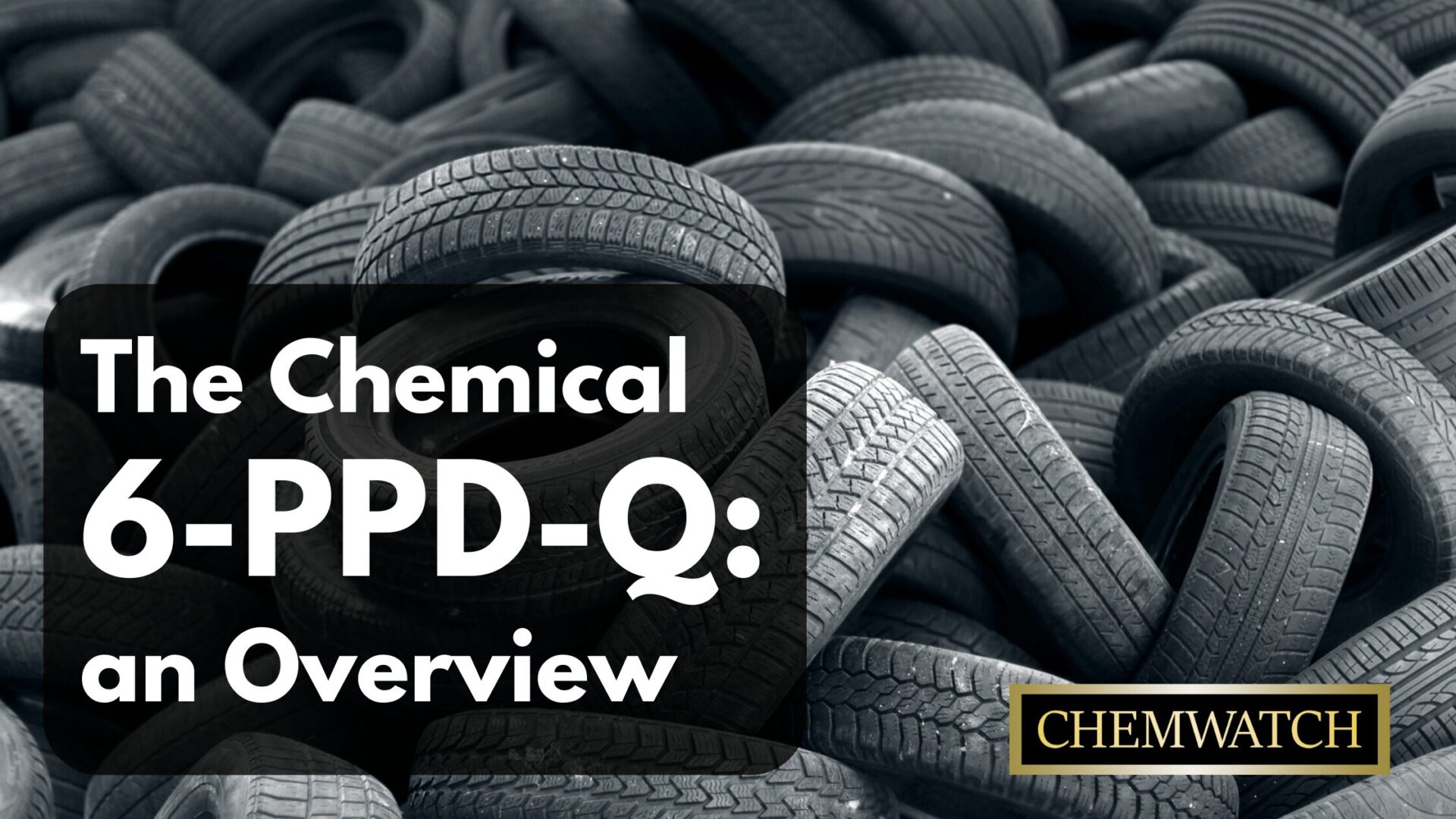
6-PPD-quinone (6-PPD-Q) is a chemical compound that has recently gained attention due to its environmental and health implications. It appears as a yellowish solid under standard conditions and emits no distinct odour, making it unassuming at first glance. However, its chemical properties and widespread presence make it a growing concern for scientists and regulators worldwide. Here’s why…

6-PPD-Q is a byproduct of 6-PPD (N-(1,3-dimethylbutyl)-N’-phenyl-p-phenylenediamine), a chemical widely used as an antioxidant and antiozonant in rubber products, particularly car tyres. 6-PPD protects tyres from degradation caused by ozone and UV radiation, extending their lifespan and ensuring safety. When tyre particles are worn down during driving or due to environmental factors, 6-PPD reacts with ozone in the atmosphere, transforming into 6-PPD-Q. This transformation results in 6-PPD-Q being released into the environment, particularly in stormwater runoff, where tyre particles are washed into waterways.
The presence of 6-PPD-Q in the environment has alarming consequences. This compound is highly toxic to aquatic life, with studies showing that it is particularly lethal to certain species of fish, including coho salmon. Even minute concentrations of 6-PPD-Q in water have been shown to cause acute mortality in salmon, disrupting ecosystems and threatening biodiversity.
From a human health perspective, the long-term implications of 6-PPD-Q exposure are not fully understood, but initial findings are concerning. Research has identified traces of the compound in human urine, indicating that it can enter the body through environmental exposure. The potential for bioaccumulation and its impacts on human health, such as endocrine disruption or carcinogenicity, requires further investigation. However, the presence of such a toxic chemical in the human body underscores the urgent need for mitigation and regulation.
Addressing the risks posed by 6-PPD-Q necessitates a multi-faceted approach:
The discovery of 6-PPD-Q and its hazardous effects highlights the unintended consequences of modern materials in our environment. As awareness of its dangers grows, it is imperative to act swiftly to mitigate its impact on aquatic ecosystems and human health. Through regulation, innovation, and collective action, we can address the challenges posed by 6-PPD-Q and work towards a safer, more sustainable future.
Chemwatch produces Safety Data Sheets (SDS) to ensure all your users are aware of the hazards related to the chemicals used in products. If you want to know more about the environmental and health effects of chemicals, or how to minimise risk while working with chemicals, we’re here to help. We have tools to help you with mandatory reporting, as well as generating SDS and Risk Assessments. We also have a library of webinars covering global safety regulations, software training, accredited courses, and labelling requirements. For more information, Contact Us today!
Sources